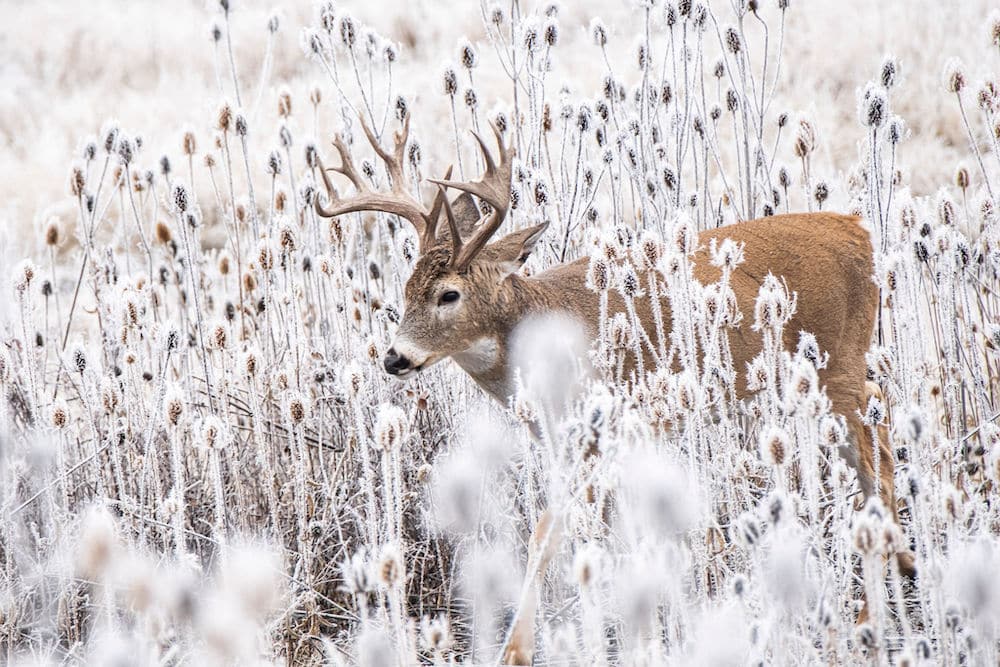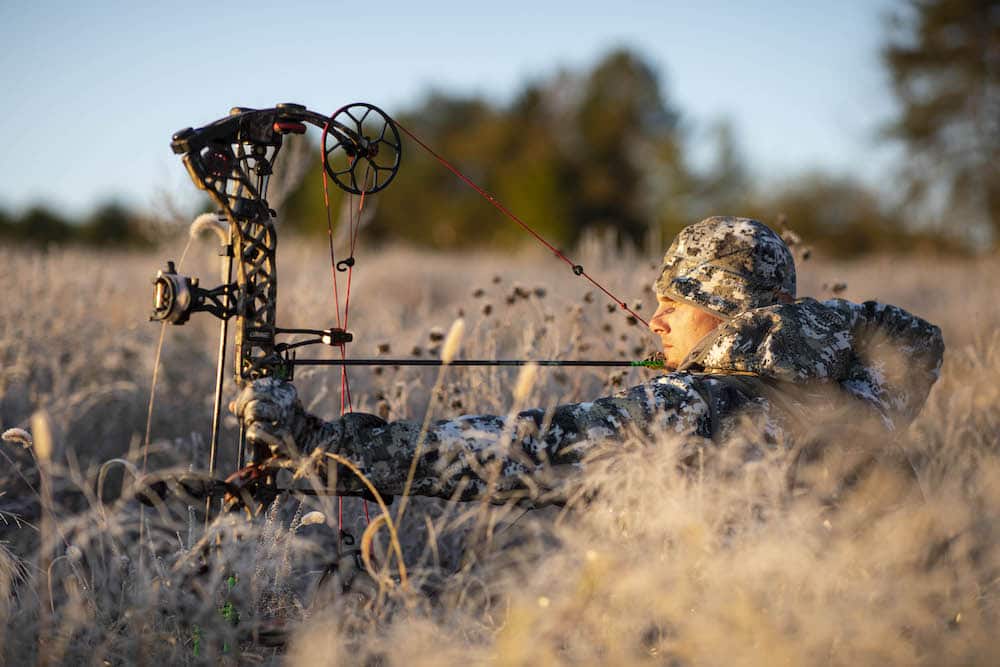Bow season is long, from September to January in many places, and so it can be difficult to narrow down the best days to hunt. But if you want to up your odds and make the most of your precious time in the woods, it’s important to understand various weather events — especially cold fronts.
A cold front is a transition zone where a cold air mass replaces warmer air, resulting in cooler temperatures, higher barometric pressure, shifting wind speeds and direction, and more. You can identify a cold front by studying the 10-day forecast on your favorite weather app. The best apps provide all the needed information to identify a cold front, including temperature, barometric pressure, wind speed and direction, and precipitation. When the temperature drops significantly (especially below the seasonal average), the barometric pressure increases and winds shift to a westerly or northerly direction. That’s the classic recipe for a cold front that’ll trigger an increase in deer movement. In situations when weather changes drastically after prolonged days of stagnant conditions, the impact of the cold front is magnified, meaning it’s time to cancel dinner plans, find a sitter and do whatever you can to be in the woods.

A change in wind direction can encourage deer to move bedding areas. Photo Credit: John Hafner
Despite all the hype around cold fronts, there isn’t biological data that suggests deer move more during them. However, there’s endless anecdotal evidence. If a cold front is in the upcoming forecast, you can bet your bottom dollar that social media will be flooded with pictures of happy hunters grinning ear to ear with nice bucks. Skeptics say this is because the placebo effect of a cold front motivates hunters to head to their best stand locations with high hopes of tagging a buck, rather than sitting an observation perch on a field edge for a glorified scouting mission. However, I believe there’s much more to it than that.
No matter where you live, cold fronts bring a significant change to the weather in your area. Think about the last time a storm rolled in. It’s a safe bet to assume the temperature dropped, wind speed increased, wind direction changed to a westerly or northerly direction and barometric pressure increased. All of these factors impact how deer behave, so it isn’t irrational to assume a cold front can boost deer movement. Changing wind direction usually motivates deer to change bedding locations, especially if they’re using the prevailing wind direction to their advantage to get a whiff of any approaching danger. Precipitation, especially right after it’s finished, can jump-start movement. Bucks like to revisit scrapes after a rain to freshen them up, and deer generally feed heavily after a late-season snowstorm pushes through.

Barber confirms that some of his best hunts were during a cold front. Photo Credit: Bowhunters United
Given the option between hunting during the peak of the rut on an average weather day and hunting in mid-October during an aggressive cold front, I’d choose the front every time. Most of my best hunts and several nice bucks have come during a time most people consider to be the “October lull” but following big cold fronts. Specifically, on one occasion, I watched in disbelief as a 5½-year-old 10-point buck cruised back and forth in a river bottom freshening scrapes, making rubs and vocalizing with grunts and snort wheezes — on Oct. 7. Judging by his behavior, one would’ve expected it to be peak rut, but the buck was simply on his feet longer in daylight hours and feeling comfortable enough to express his dominance during a period when bucks typically spend most of their time tucked away in a secluded bedding area. I don’t believe this buck would’ve acted in such a manner if the conditions were warm, humid and stagnant.
Keep an eye on the forecast and plan your days afield strategically. If you focus on cold fronts, you’ll enjoy the best days of the entire season.